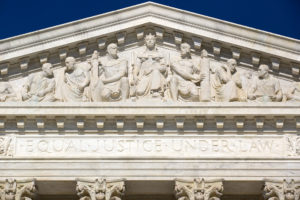PREP Act Liability Protections worked, COVID-19 vaccines are safe and life-saving
 As Brad Pitt and J-Lo know only too well, being a celebrity, a status I achieved thanks in no small part to this column and the quite fetching full-color headshot that runs with it, can sometimes be a pain in the gluteus maximus. That pain has become excruciating in recent weeks as a growing number of incredibly intense people have accosted me in public because I believe everyone should receive the COVID-19 vaccine and I support vaccination mandates.
As Brad Pitt and J-Lo know only too well, being a celebrity, a status I achieved thanks in no small part to this column and the quite fetching full-color headshot that runs with it, can sometimes be a pain in the gluteus maximus. That pain has become excruciating in recent weeks as a growing number of incredibly intense people have accosted me in public because I believe everyone should receive the COVID-19 vaccine and I support vaccination mandates.
Look, I am more than willing to engage in a fact-based debate about the pandemic and the measures being taken to end it. But I run out of patience when someone shoves their smartphone in my face while I am sitting in a restaurant eating and screams DAVID, DAVID, look at this Facebook post—thanks for that Mark Zuckerberg—and then proceeds to tell me at the top of their lungs that the vaccines contain computer chips, are made from dead babies, will alter my DNA, and render me infertile.
Well, okay, none of those things are true, a detail that has exactly zero impact on the wild-eyed disbelievers who hover around me like buzzards circling roadkill until I give up and run for the door.
A couple of days ago, however, one of the vaccine resisters who has dedicated his life to disrupting my dinner made a relatively cogent point, albeit in a belligerent manner. “Hey, Mr. Big Shot Trial Lawyer, if the vaccines are so safe, how come the government passed a law that says vaccine makers and those who dispense it can’t be sued when their poison kills and maims people? Why did they leave victims out in the cold? They did it because they know the death toll is going to be in the millions, that’s why.”
 So, my tormenter is right about one thing: the federal government has extended nearly total liability immunity to manufacturers, distributors, prescribers, and dispensers of products developed to treat, diagnose, or prevent the onset of COVID-19.
So, my tormenter is right about one thing: the federal government has extended nearly total liability immunity to manufacturers, distributors, prescribers, and dispensers of products developed to treat, diagnose, or prevent the onset of COVID-19.
But it is important to remember that the Public Readiness and Emergency Preparedness Act (PREP) which provides the immunity was not enacted specifically to protect the makers of COVID-19 vaccines. It was enacted by Congress and signed into law by George W. Bush in 2005 in the wake of a serious bird flu outbreak. The rationale for the law was simple: the liability shield would give drug makers the protection they needed to respond quickly and effectively to a public health crisis.
When Coronavirus hit, the law worked exactly as planned. On February 4, 2020, the Trump Administration declared COVID-19 to be a public health emergency and invoked PREP. Within months the first vaccines were ready for use. Today, 191 million Americans have been vaccinated, and due in large part to vaccine mandates imposed by employers, the spread of the Delta variant is easing rapidly.
While my anti-vax buddy was right about the existence of the liability shield, he was wrong when he said those hurt or killed by the vaccine would be left out in the cold. Anyone who believes they have suffered serious side effects from a COVID-19 vaccine is eligible to file for benefits from the Countermeasures Injury Compensation Program (CIPC), a special fund established to provide payments to anyone who was injured by any drug or treatment related to a PREP emergency declaration. To date, while 416 million doses of the vaccine have been administered only 296 COVID-19 related claims have been filed.
Now that is a statistic that should be all over Facebook.



 Chief among the potential blockbusters is
Chief among the potential blockbusters is